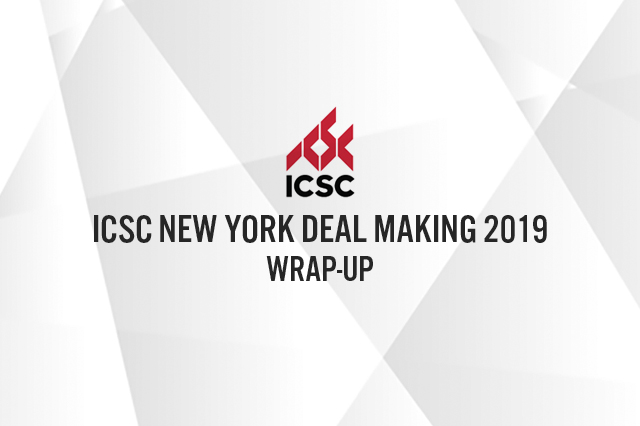
Nitheesh NH
ICSC New York Deal Making brought together key players in real estate, connecting brands with tech innovators. The theme of this year’s event was “New Trends. New Tenants. New Technology.”
These are our key insights from the conference.
Current trends reflect a reinvention of retail—not an apocalypse. Pop-ups are emerging as the greatest innovation in the use of physical space to engage with consumers.
The creative use of retail space is on the rise, and the pop-up movement is at the forefront of this reinvention of retail. One interesting example discussed at ICSC New York Deal Making 2019 was Facebook bringing together around 100 digitally native brands and small businesses that performed well on the social network to open pop-up shops in nine Macy’s department stores across the US. These partnerships offer benefits to the emerging brands and to the chains that incorporate them into their existing space.
A strong new category of pop-ups is experiential media and entertainment. For example, pop-up shops inspired by Netflix program Black Mirror were opened across the UK in January 2019, coinciding with the release of the network’s interactive Bandersnatch episode.
We’re also seeing that although pop-ups provide a single, temporary location in a mall or rental space, this offers a platform from which retailers can grow into a stronger, more permanent presence. For example, San Francisco-based Figure 8, which operates the Museum of Ice Cream, started out with pop-up events in Los Angeles, Manhattan, Miami and San Francisco in 2016 and 2017. The company has since leased permanent space in San Francisco and recently signed a 10-year deal for 25,000 square feet of space in a vacant H&M store in SoHo.
Politan Row is food hall that recently opened in Chicago. The space features many food vendors that previously existed only as pop-ups or food trucks, giving them a permanent space.
[caption id="attachment_101204" align="aligncenter" width="700"]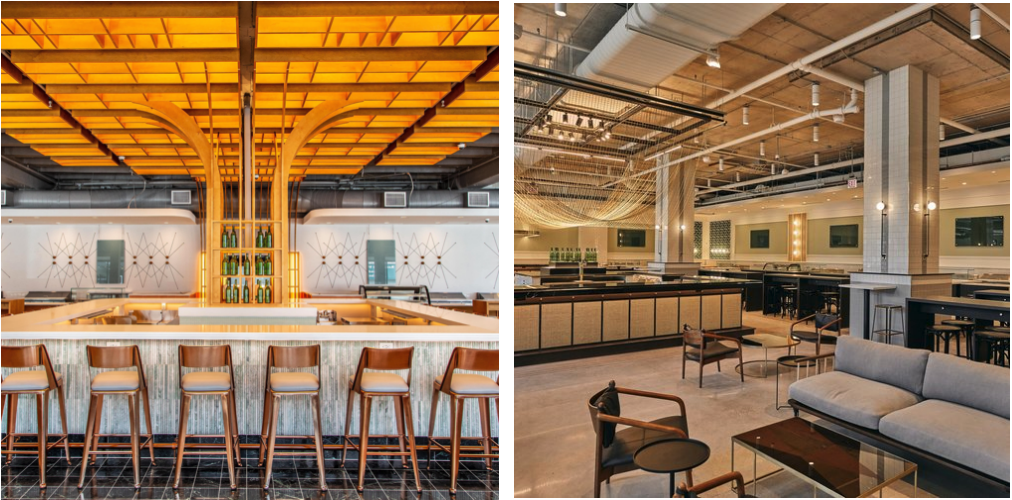 Source: Politan Row[/caption]
Showfields offers up-and-coming brands the opportunity to connect with consumers in a completely customized pop-up space. The four-story flagship location in New York City features an array of curated brands from the wellness, home and design spaces alongside dedicated food and beverage offerings and events.
[caption id="attachment_101205" align="aligncenter" width="700"]
Source: Politan Row[/caption]
Showfields offers up-and-coming brands the opportunity to connect with consumers in a completely customized pop-up space. The four-story flagship location in New York City features an array of curated brands from the wellness, home and design spaces alongside dedicated food and beverage offerings and events.
[caption id="attachment_101205" align="aligncenter" width="700"]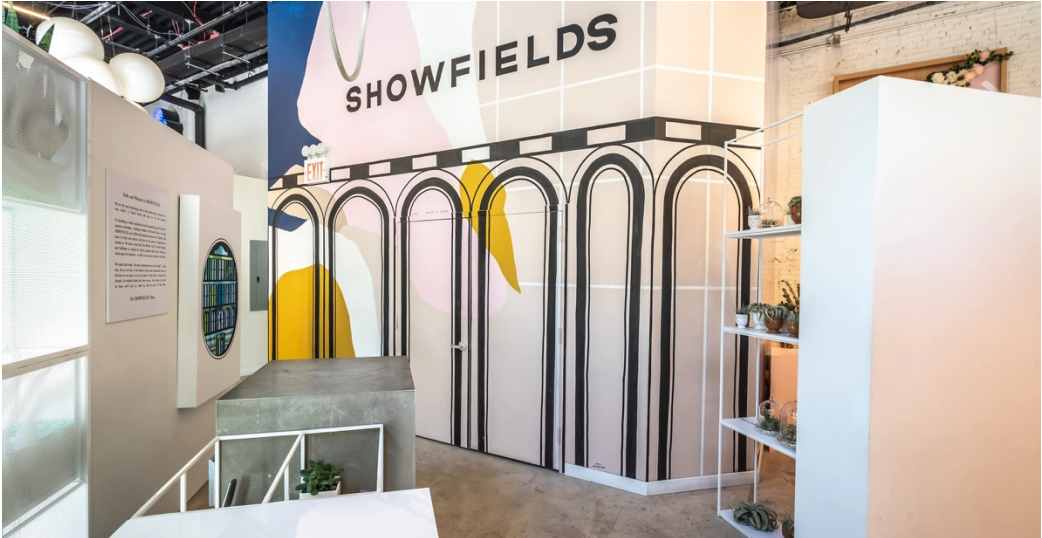 Source: Showfields[/caption]
There is a huge opportunity for digitally native companies to extend their presence to offline stores, such as through pop-up initiatives. The transition to physical retail is a strategy aimed at appealing to today’s omnichannel shoppers by enabling a seamless experience from online to in store and vice-versa. However, not all direct-to-consumer brands are experiencing high engagement in brick-and-mortar stores, because they lack operational experience in physical retail, including point-of-sale processes (including in-store returns), merchandising and employee turnover management.
Omnichannel shoppers are more active shoppers
ICSC published a study in 2018 exploring the influence of physical stores on retailers’ web traffic. The study of more than $31 billion in consumer spending during 2016, 2017 and 2018 revealed a halo effect whereby shoppers’ average net spend increased significantly when they shopped both online and in store through the same retailer within 15 days.
Furthermore, the study found that although omnichannel shoppers accounted for only 17% of the total number of consumers, they contributed 34% of total spend across all categories, compared to shoppers who only buy online or in store.
[caption id="attachment_101206" align="aligncenter" width="700"]
Source: Showfields[/caption]
There is a huge opportunity for digitally native companies to extend their presence to offline stores, such as through pop-up initiatives. The transition to physical retail is a strategy aimed at appealing to today’s omnichannel shoppers by enabling a seamless experience from online to in store and vice-versa. However, not all direct-to-consumer brands are experiencing high engagement in brick-and-mortar stores, because they lack operational experience in physical retail, including point-of-sale processes (including in-store returns), merchandising and employee turnover management.
Omnichannel shoppers are more active shoppers
ICSC published a study in 2018 exploring the influence of physical stores on retailers’ web traffic. The study of more than $31 billion in consumer spending during 2016, 2017 and 2018 revealed a halo effect whereby shoppers’ average net spend increased significantly when they shopped both online and in store through the same retailer within 15 days.
Furthermore, the study found that although omnichannel shoppers accounted for only 17% of the total number of consumers, they contributed 34% of total spend across all categories, compared to shoppers who only buy online or in store.
[caption id="attachment_101206" align="aligncenter" width="700"]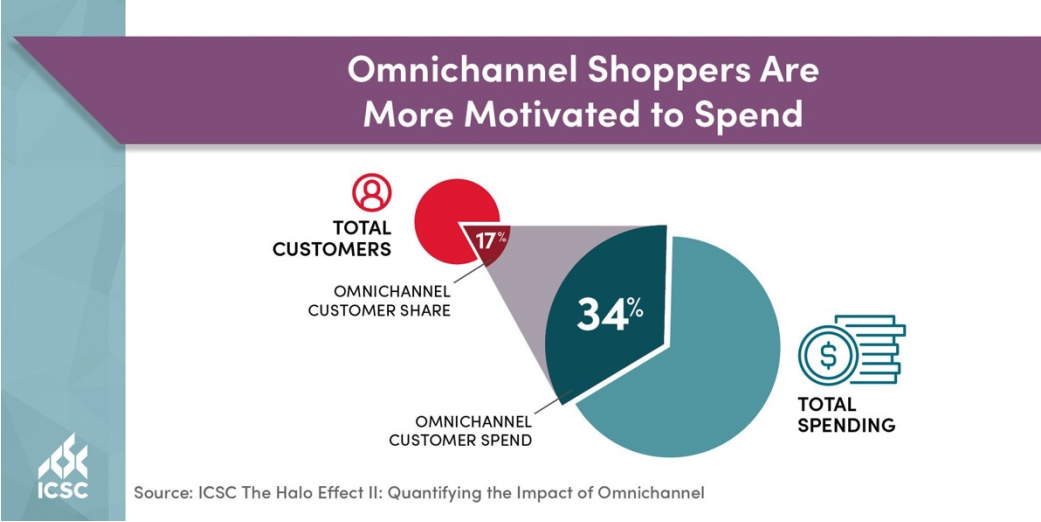 Source: ICSC[/caption]
Today’s consumer demands inclusivity, discovery, convenience and experience.
Inclusivity, discovery, convenience and experience have emerged as social values that matter to today’s shoppers, especially to the younger generation.
Source: ICSC[/caption]
Today’s consumer demands inclusivity, discovery, convenience and experience.
Inclusivity, discovery, convenience and experience have emerged as social values that matter to today’s shoppers, especially to the younger generation.
 Source: Alchemy 43[/caption]
Hundred
Hundred is a personalized vitamin subscription service that seeks to make buying vitamins more engaging and convenient. The company offers a dedicated nutritionist to help consumers select a vitamin regime, a subscription service to ensure a steady supply and ongoing advice from the nutritionist to maintain consumer engagement.
[caption id="attachment_101208" align="aligncenter" width="700"]
Source: Alchemy 43[/caption]
Hundred
Hundred is a personalized vitamin subscription service that seeks to make buying vitamins more engaging and convenient. The company offers a dedicated nutritionist to help consumers select a vitamin regime, a subscription service to ensure a steady supply and ongoing advice from the nutritionist to maintain consumer engagement.
[caption id="attachment_101208" align="aligncenter" width="700"] Source: hundred[/caption]
Neighborhood Goods
Neighborhood Goods is a new type of department store that offers a wide range of products, from apparel to household goods and electronics. To drive engagement and create a community feel, the retailer hosts regular events for the public, such as holiday-themed activities and seminars on photography.
[caption id="attachment_101209" align="aligncenter" width="700"]
Source: hundred[/caption]
Neighborhood Goods
Neighborhood Goods is a new type of department store that offers a wide range of products, from apparel to household goods and electronics. To drive engagement and create a community feel, the retailer hosts regular events for the public, such as holiday-themed activities and seminars on photography.
[caption id="attachment_101209" align="aligncenter" width="700"]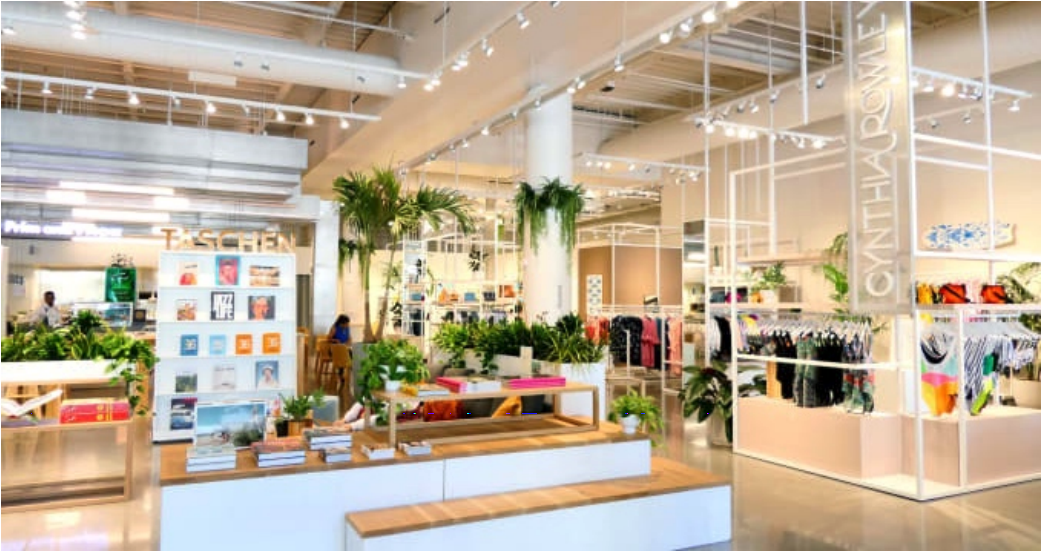 Source: Neighborhood Goods[/caption]
Shape House
Shape House brings the rural sweat-lodge experience to urban consumers. Rather than trekking to a remote location in the woods, consumers can book an appointment online to spend time in an up-market sweat lodge that uses infrared blankets to provide heat. The company claims that sweating offers benefits such as weight loss, sleep enhancement and stress management.
[caption id="attachment_101210" align="aligncenter" width="700"]
Source: Neighborhood Goods[/caption]
Shape House
Shape House brings the rural sweat-lodge experience to urban consumers. Rather than trekking to a remote location in the woods, consumers can book an appointment online to spend time in an up-market sweat lodge that uses infrared blankets to provide heat. The company claims that sweating offers benefits such as weight loss, sleep enhancement and stress management.
[caption id="attachment_101210" align="aligncenter" width="700"] Source: Shape House[/caption]
S/O/S introduced a network of digital, machines that deliver women’s health and beauty products, creating an interactive retail experience for consumers.
[caption id="attachment_101211" align="aligncenter" width="700"]
Source: Shape House[/caption]
S/O/S introduced a network of digital, machines that deliver women’s health and beauty products, creating an interactive retail experience for consumers.
[caption id="attachment_101211" align="aligncenter" width="700"]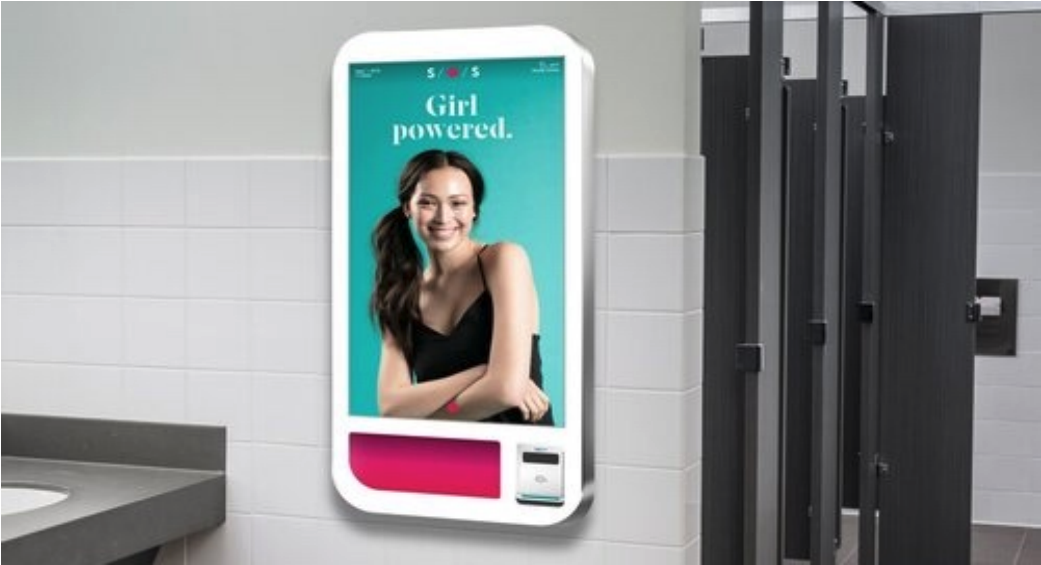 Source: S/O/S[/caption]
Source: S/O/S[/caption]
 Source: Politan Row[/caption]
Showfields offers up-and-coming brands the opportunity to connect with consumers in a completely customized pop-up space. The four-story flagship location in New York City features an array of curated brands from the wellness, home and design spaces alongside dedicated food and beverage offerings and events.
[caption id="attachment_101205" align="aligncenter" width="700"]
Source: Politan Row[/caption]
Showfields offers up-and-coming brands the opportunity to connect with consumers in a completely customized pop-up space. The four-story flagship location in New York City features an array of curated brands from the wellness, home and design spaces alongside dedicated food and beverage offerings and events.
[caption id="attachment_101205" align="aligncenter" width="700"] Source: Showfields[/caption]
There is a huge opportunity for digitally native companies to extend their presence to offline stores, such as through pop-up initiatives. The transition to physical retail is a strategy aimed at appealing to today’s omnichannel shoppers by enabling a seamless experience from online to in store and vice-versa. However, not all direct-to-consumer brands are experiencing high engagement in brick-and-mortar stores, because they lack operational experience in physical retail, including point-of-sale processes (including in-store returns), merchandising and employee turnover management.
Omnichannel shoppers are more active shoppers
ICSC published a study in 2018 exploring the influence of physical stores on retailers’ web traffic. The study of more than $31 billion in consumer spending during 2016, 2017 and 2018 revealed a halo effect whereby shoppers’ average net spend increased significantly when they shopped both online and in store through the same retailer within 15 days.
Furthermore, the study found that although omnichannel shoppers accounted for only 17% of the total number of consumers, they contributed 34% of total spend across all categories, compared to shoppers who only buy online or in store.
[caption id="attachment_101206" align="aligncenter" width="700"]
Source: Showfields[/caption]
There is a huge opportunity for digitally native companies to extend their presence to offline stores, such as through pop-up initiatives. The transition to physical retail is a strategy aimed at appealing to today’s omnichannel shoppers by enabling a seamless experience from online to in store and vice-versa. However, not all direct-to-consumer brands are experiencing high engagement in brick-and-mortar stores, because they lack operational experience in physical retail, including point-of-sale processes (including in-store returns), merchandising and employee turnover management.
Omnichannel shoppers are more active shoppers
ICSC published a study in 2018 exploring the influence of physical stores on retailers’ web traffic. The study of more than $31 billion in consumer spending during 2016, 2017 and 2018 revealed a halo effect whereby shoppers’ average net spend increased significantly when they shopped both online and in store through the same retailer within 15 days.
Furthermore, the study found that although omnichannel shoppers accounted for only 17% of the total number of consumers, they contributed 34% of total spend across all categories, compared to shoppers who only buy online or in store.
[caption id="attachment_101206" align="aligncenter" width="700"] Source: ICSC[/caption]
Today’s consumer demands inclusivity, discovery, convenience and experience.
Inclusivity, discovery, convenience and experience have emerged as social values that matter to today’s shoppers, especially to the younger generation.
Source: ICSC[/caption]
Today’s consumer demands inclusivity, discovery, convenience and experience.
Inclusivity, discovery, convenience and experience have emerged as social values that matter to today’s shoppers, especially to the younger generation.
- Inclusivity: Digitalization has leveled the marketplace, and once-exclusive brands with very limited reach can now be easily found online. Farfetch and other online luxury shops are broadening access to luxury brands. Greater access is pushing brands to greater consumer inclusivity.
- Discovery: In a digitally connected world, retailers must have a nuanced understanding of the ways in which consumers discover, discuss, research and ultimately purchase products. We are seeing a trend in which hard discounters such as Aldi are becoming increasingly preferred tenants, along with off-price retailers including Burlington and TJ Maxx, as these stores offer a greater product assortment for shoppers to discover and explore.
- Convenience: Walmart is testing a new healthcare center in Dallas, Georgia, providing patients with convenient services such as primary care, labs, x-rays, counseling and optical. The retailer leverages a team of healthcare experts to bring the concept to life. The Walmart Health Center also offers community health resources, online education and in-center workshops on preventive health and wellness issues.
- Experience: Craft stores like Hobby Lobby are gaining mindshare, as they are destinations for experience.
 Source: Alchemy 43[/caption]
Hundred
Hundred is a personalized vitamin subscription service that seeks to make buying vitamins more engaging and convenient. The company offers a dedicated nutritionist to help consumers select a vitamin regime, a subscription service to ensure a steady supply and ongoing advice from the nutritionist to maintain consumer engagement.
[caption id="attachment_101208" align="aligncenter" width="700"]
Source: Alchemy 43[/caption]
Hundred
Hundred is a personalized vitamin subscription service that seeks to make buying vitamins more engaging and convenient. The company offers a dedicated nutritionist to help consumers select a vitamin regime, a subscription service to ensure a steady supply and ongoing advice from the nutritionist to maintain consumer engagement.
[caption id="attachment_101208" align="aligncenter" width="700"] Source: hundred[/caption]
Neighborhood Goods
Neighborhood Goods is a new type of department store that offers a wide range of products, from apparel to household goods and electronics. To drive engagement and create a community feel, the retailer hosts regular events for the public, such as holiday-themed activities and seminars on photography.
[caption id="attachment_101209" align="aligncenter" width="700"]
Source: hundred[/caption]
Neighborhood Goods
Neighborhood Goods is a new type of department store that offers a wide range of products, from apparel to household goods and electronics. To drive engagement and create a community feel, the retailer hosts regular events for the public, such as holiday-themed activities and seminars on photography.
[caption id="attachment_101209" align="aligncenter" width="700"] Source: Neighborhood Goods[/caption]
Shape House
Shape House brings the rural sweat-lodge experience to urban consumers. Rather than trekking to a remote location in the woods, consumers can book an appointment online to spend time in an up-market sweat lodge that uses infrared blankets to provide heat. The company claims that sweating offers benefits such as weight loss, sleep enhancement and stress management.
[caption id="attachment_101210" align="aligncenter" width="700"]
Source: Neighborhood Goods[/caption]
Shape House
Shape House brings the rural sweat-lodge experience to urban consumers. Rather than trekking to a remote location in the woods, consumers can book an appointment online to spend time in an up-market sweat lodge that uses infrared blankets to provide heat. The company claims that sweating offers benefits such as weight loss, sleep enhancement and stress management.
[caption id="attachment_101210" align="aligncenter" width="700"] Source: Shape House[/caption]
S/O/S introduced a network of digital, machines that deliver women’s health and beauty products, creating an interactive retail experience for consumers.
[caption id="attachment_101211" align="aligncenter" width="700"]
Source: Shape House[/caption]
S/O/S introduced a network of digital, machines that deliver women’s health and beauty products, creating an interactive retail experience for consumers.
[caption id="attachment_101211" align="aligncenter" width="700"] Source: S/O/S[/caption]
Source: S/O/S[/caption]